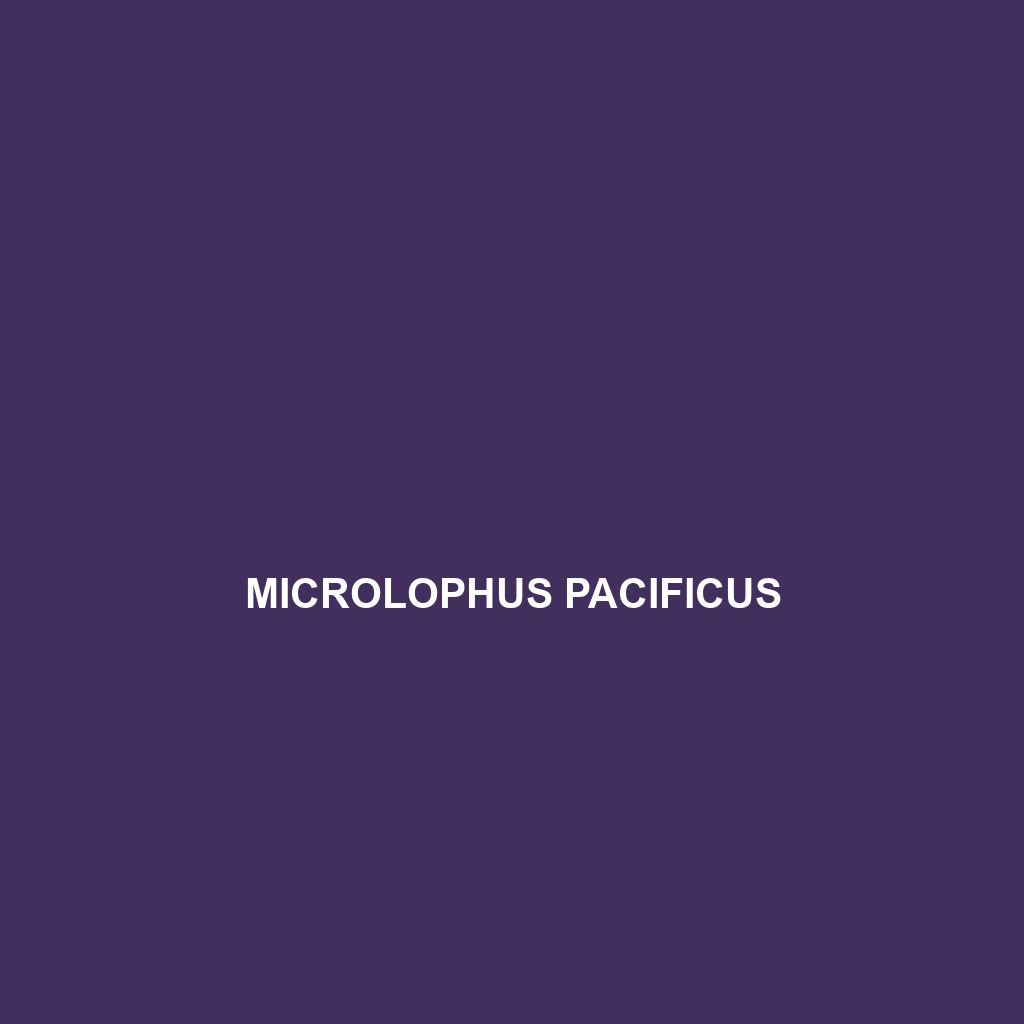Common Name
Microlophus pacificus
Scientific Name
Microlophus pacificus
Habitat
Microlophus pacificus, commonly known as the Pacific Galápagos lava lizard, is primarily found in the Galápagos Islands, specifically on the islands of San Cristóbal and Santa Cruz. This species thrives in a diverse range of habitats, including volcanic landscapes and coastal regions. The climate in these areas is typically arid and temperate, characterized by warm temperatures and sparse vegetation. The lizard is often spotted basking on rocky substrates in areas with sparse shrubs or near marine habitats where they can hunt for food.
Physical Characteristics
Microlophus pacificus measures approximately 10 to 15 centimeters in length, with males being slightly larger than females. They exhibit a distinctive elongated body with a pointed snout. Their coloration varies between individuals, but they typically possess a mosaic of earthy tones such as browns, yellows, and grays, which serve as camouflage against the rocky surfaces of their habitat. Notable features include small, rough scales and a long tail, which aids in balance and mobility across rocky terrains.
Behavior
In terms of behavior, Microlophus pacificus shows a mix of diurnal and territorial tendencies. These lizards are primarily active during the day, often seen basking in the sun to regulate their body temperature. They display fascinating social interactions, particularly during mating rituals, where males perform elaborate displays to attract females. Additionally, they have been observed exhibiting a form of territoriality, where dominant males assert their presence through visual displays or vocalizations. Their mating season generally peaks during warmer months, which coincides with their optimal foraging periods.
Diet
Microlophus pacificus is primarily an insectivore, meaning its diet consists mainly of small invertebrates such as insects and arachnids. Their feeding patterns involve active foraging, where they hunt for prey among rocks and vegetation. They will also consume plant matter occasionally, making them omnivorous to some extent. This dietary flexibility allows them to adapt to changing environmental conditions and available food sources in their habitat.
Reproduction
The reproductive cycle of Microlophus pacificus involves distinct mating rituals during the dry season, from approximately February to April. Females typically lay 2 to 6 eggs in sandy habitats, where they bury them to protect from predators. The incubation period lasts about 60 to 90 days, depending on environmental conditions. After hatching, the juveniles are independent and receive no parental care, which is a common trait among many lizard species. This reproductive strategy ensures a higher survival rate as the offspring must fend for themselves from an early age.
Conservation Status
The conservation status of Microlophus pacificus is currently classified as Least Concern by the IUCN Red List, although the species faces threats from habitat destruction and invasive species. Conservation efforts in the Galápagos Islands focus on habitat preservation and controlling invasive species that threaten native wildlife. Awareness campaigns are crucial in promoting sustainable tourism practices to ensure the protection of these unique lizards and their habitats.
Interesting Facts
One unique adaptation of Microlophus pacificus is its ability to change coloration slightly based on environmental conditions, aiding in camouflage. Additionally, these lizards possess a remarkable ability to regenerate their tails after losing them, a common defense mechanism among reptiles. Their swift movements and alert posture contribute to their survival in an environment populated with both predators and competition for resources.
Role in Ecosystem
Microlophus pacificus plays a significant role in its ecosystem as both predator and prey. By feeding on insects, they help regulate insect populations, thus contributing to the overall health of their habitat. Furthermore, they serve as a food source for larger predators, including birds of prey and snakes. As such, these lizards are considered important components of the food web within the Galápagos Islands, highlighting their ecological significance as both foragers and contributors to the biodiversity of their environment.
